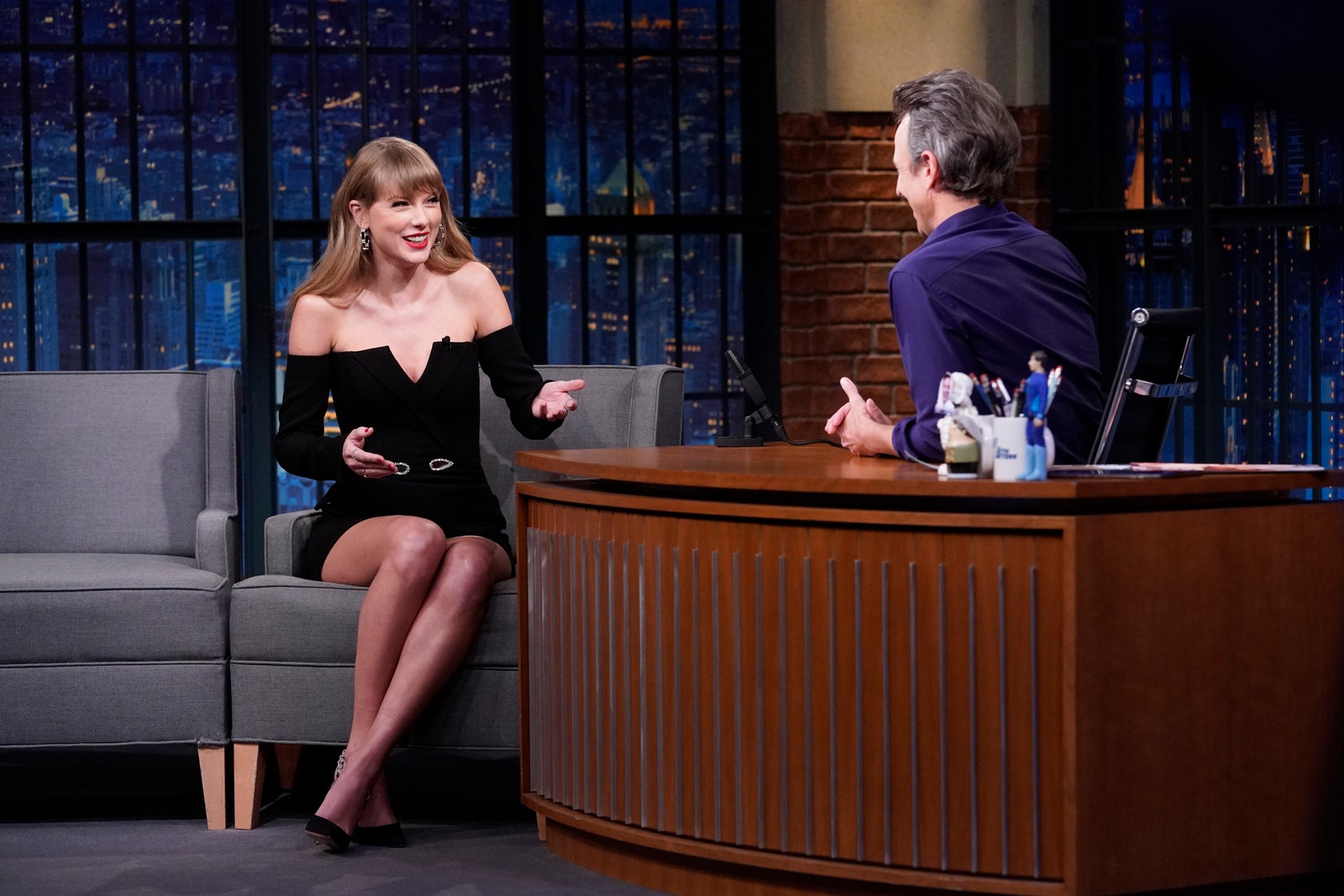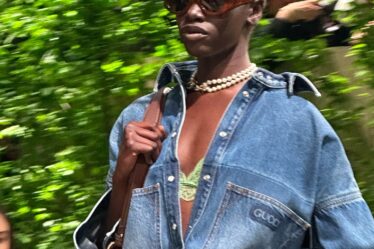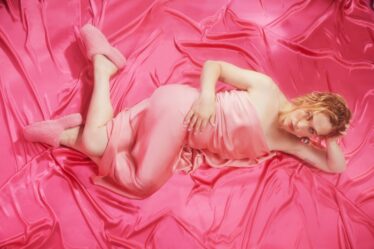
“I think the [dress] resonates so strongly with people because she was a beloved public figure who was wronged in public,” says Fade Eadeh, a psychology professor at Seattle University who has studied the negative and positive effects of revenge. “I think she probably did want to show then-Prince Charles what he had lost. I’m sure it felt great for her at the time. The positivity of revenge I think comes from the idea that you want to restore balance and justice in the world, and send a message to a person.”
Diana didn’t invent revenge dressing, obviously, but her look has spawned a pop culture trend that’s lasted for generations, and is even more widespread thanks to social media.
NBC/Getty Images
In 2021, queen of vengeance-via-song-lyric Taylor Swift wore an LBD on Late Night With Seth Meyers that looked suspiciously like Diana’s original revenge dress. A year later, on the song “Vigilante Shit” from Swift’s new album Midnights, she sings, “I don’t dress for women/I don’t dress for men/lately I’ve been dressing for revenge.” In a line the late Diana would no doubt appreciate, she sings, “Don’t get sad, get even.”
Unlike Diana, my personal attempts at vengeance have never made headlines. I rocked plenty of revenge dresses of my own after breakups, and never with the goal of repairing the relationship. The objective was always to inflict pain on the enemy. Make them weep and beg for mercy, or at least make them question their life choices as I strutted around in a backless red mini dress.
What makes revenge dressing so sweet is that it accomplishes a goal without the long-lasting consequences of revenge in the more medieval sense—this is not an eye-for-an-eye situation. Revenge dressing, says Eadeh, can boost your self-esteem and your mood, and restore the balance, at least in your eyes, after you’ve been slighted. And for many women, that’s good enough.



